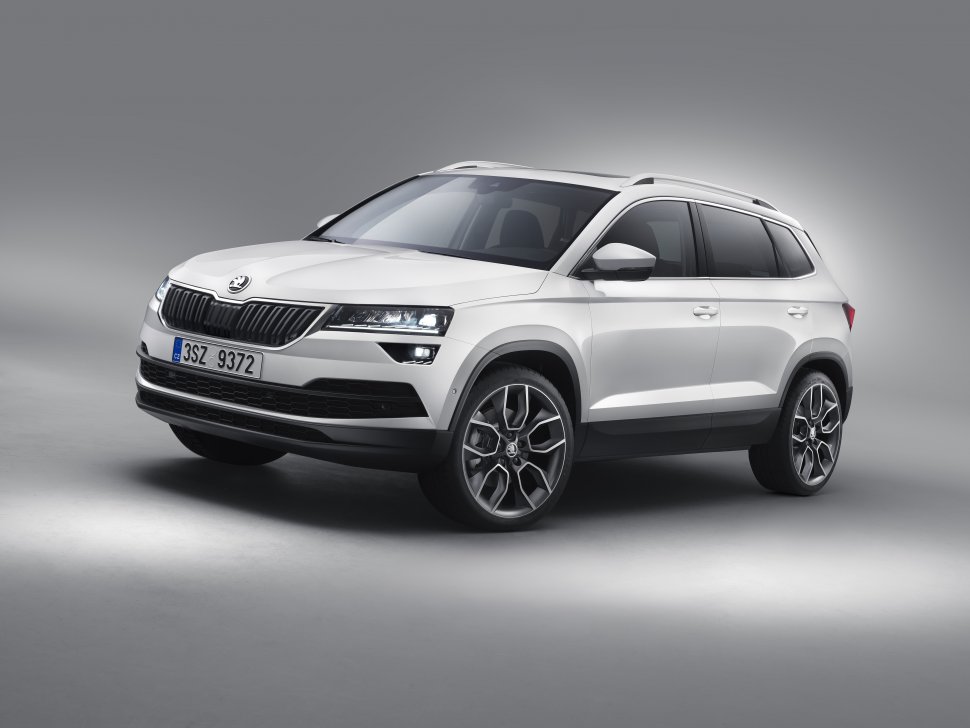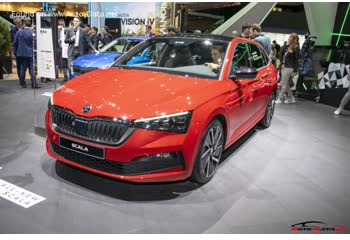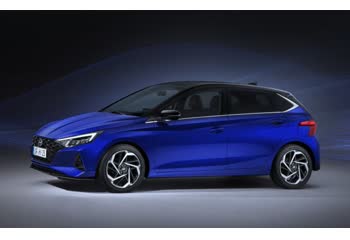Everything you need to know about specifications and performance - Skoda Karoq Karoq 2020 - 1.0 TSI (110 Hp)

Overview:
What is the engine capacity of a Skoda Karoq 2020?
The engine capacity of the Skoda Karoq 2020 is 999.
Skoda Karoq 2020 How many horsepower?
The engine power of the Skoda Karoq 2020 is 110 Hp @ 5500 rpm..
What is the Skoda Karoq 2020 engine?
Skoda Karoq 2020 engine is EA211 / DLAA. (Click to see other cars using the same engine)
How much gasoline does a Skoda Karoq 2020 consume?
The Skoda Karoq 2020 consumes 5.2-5.5 liters of gasoline per 100 km
General:
Brand: Skoda
Model: Karoq
Generation: Karoq
Modification (Engine): 1.0 TSI (110 Hp)
Start of production: October, 2020
End of production: November, 2021
Powertrain Architecture: Internal Combustion Engine
Body type: Sports Utility Vehicle (SUV)
Seats: 5
Doors: 5
Engine:
Engine systems: Start & Stop System
Power: 110 hp @ 5500 rpm.
Power per litre: 110.1 hp/l
Torque: 200 nm @ 2000-3000 rpm.
Engine Model/Code: EA211 / DLAA
Engine displacement: 999
Number of cylinders: 3
Engine configuration: Inline
Number of valves per cylinder: 4
Fuel injection system: Direct injection
Engine aspiration: Turbocharger, Intercooler
Valvetrain: DOHC
Engine oil capacity: 4 l
Engine layout: Front, Transverse
Cylinder Bore: 74.5 mm
Piston Stroke: 76.4 mm
Compression ratio: 10.5:1
Performance:
Fuel Type: Petrol (Gasoline)
Fuel consumption (economy) - urban: 6.5-6.7 l/100 km
Fuel consumption (economy) - extra urban: 4.4-4.7 l/100 km
Combined fuel consumption (WLTP): 5.9 l/100 km
Fuel consumption (economy) - combined (NEDC): 5.2-5.5 l/100 km
Fuel consumption at Low speed (WLTP): 7.2 l/100 km
Fuel consumption at Medium speed (WLTP): 5.7 l/100 km
Fuel consumption at high speed (WLTP): 5.1 l/100 km
Fuel consumption at very high speed (WLTP): 6.2 l/100 km
Fuel consumption (economy) - urban (NEDC): 6.5-6.7 l/100 km
Fuel consumption (economy) - extra urban (NEDC): 4.4-4.7 l/100 km
Fuel consumption (economy) - combined: 5.2-5.5 l/100 km
Emission standard: Euro 6d-ISC-Fcm
Acceleration 0 - 100 km/h: 11.1 sec
Acceleration 0 - 62 mph: 11.1 sec
Maximum speed: 186 km/h
Weight-to-power ratio: 11.5 kg/Hp, 86.7 Hp/tonne
Weight-to-torque ratio: 6.3 kg/Nm, 157.6 Nm/tonne
Acceleration 0 - 60 mph: 10.5 sec
Space:
Kerb Weight (kg): 1269
Max. weight (kg): 1872
Max. roof load: 75 kg
Max load (kg): 603
Trunk (boot) space - maximum: 1630 l
Trunk (boot) space - minimum: 521 l
Permitted trailer load with brakes (12%): 1200 kg
Fuel tank capacity: 50 l
Permitted trailer load without brakes: 670 kg
Permitted towbar download: 90 kg
Permitted trailer load with brakes (8%): 1400 kg
dimensions:
Length: 4382 mm
Width: 1841 mm
Height: 1603 mm
wheelbase: 2638 mm
Width including mirrors: 2025 mm
Front track: 1576 mm
Rear (Back) track: 1541 mm
Front overhang: 877 mm
Rear overhang: 866 mm
Ride height (ground clearance): 163 mm
Minimum turning circle (turning diameter): 10.9 m
Approach angle: 18.4°
Departure angle: 18.7°
Powertrain, Suspension and Brakes:
Drivetrain Architecture: The Internal combustion Engine (ICE) drives the front wheels of the vehicle.
Drive wheel: Front wheel drive
Number of gears and type of gearbox: 6 gears, manual transmission
Front brakes: Ventilated discs
Rear brakes: Disc
Assisting systems: ABS (Anti-lock braking system)
Steering type: Steering rack and pinion
Power steering: Electric Steering
Tires size: 215/55 R17; 215/50 R18
Wheel rims size: 7J x 17; 7J x 18
Front suspension: Independent type McPherson, Transverse stabilizer
Rear suspension: Torsion
See also

Last generation.
Its production began in 2021 until Now

Same engine. (EA211 / DLAA).
Its production began in 2020 until 2023

Same production year and almost the same engine capacity.
Its production began in 2020 until 2023

Write a comment